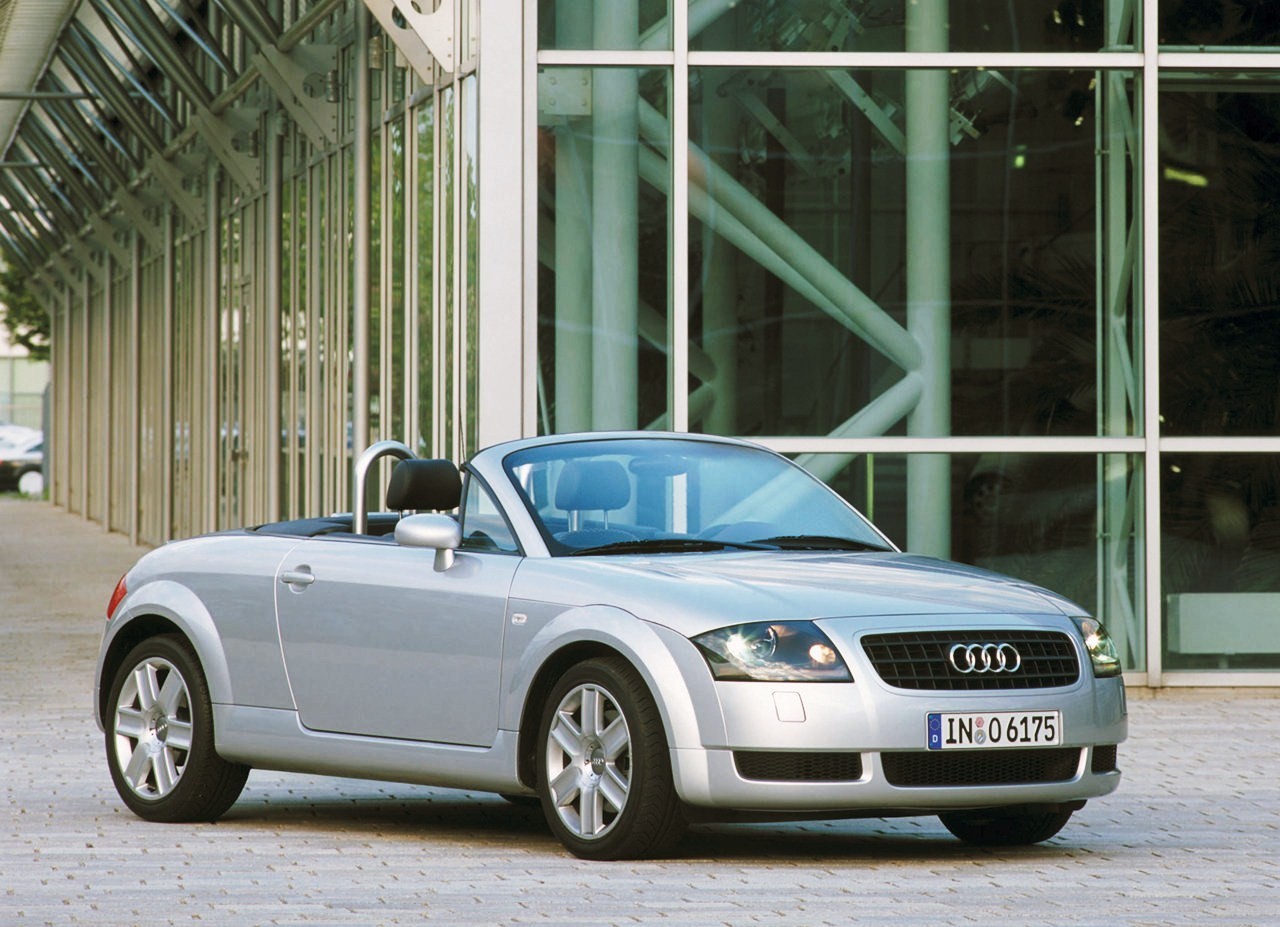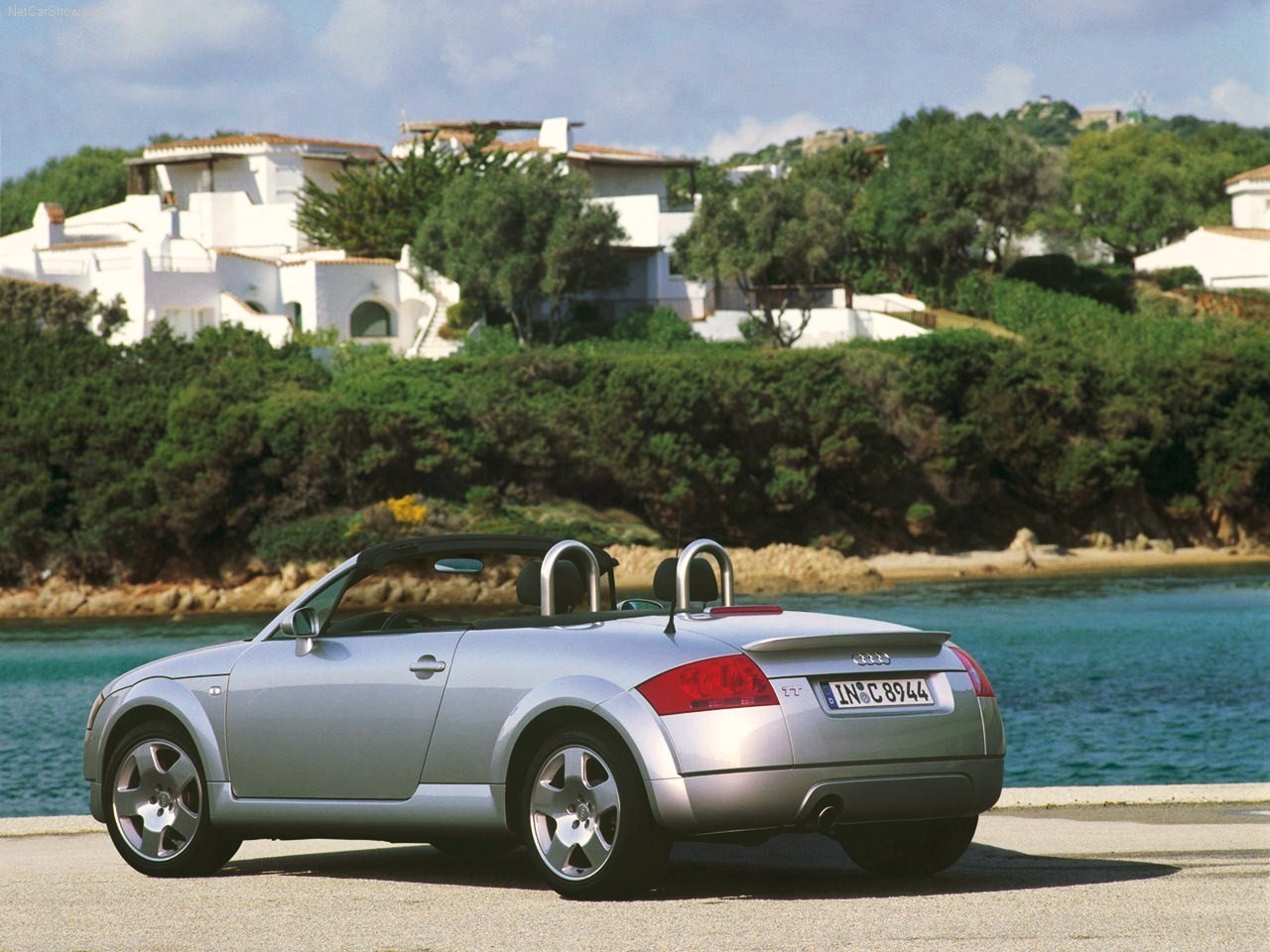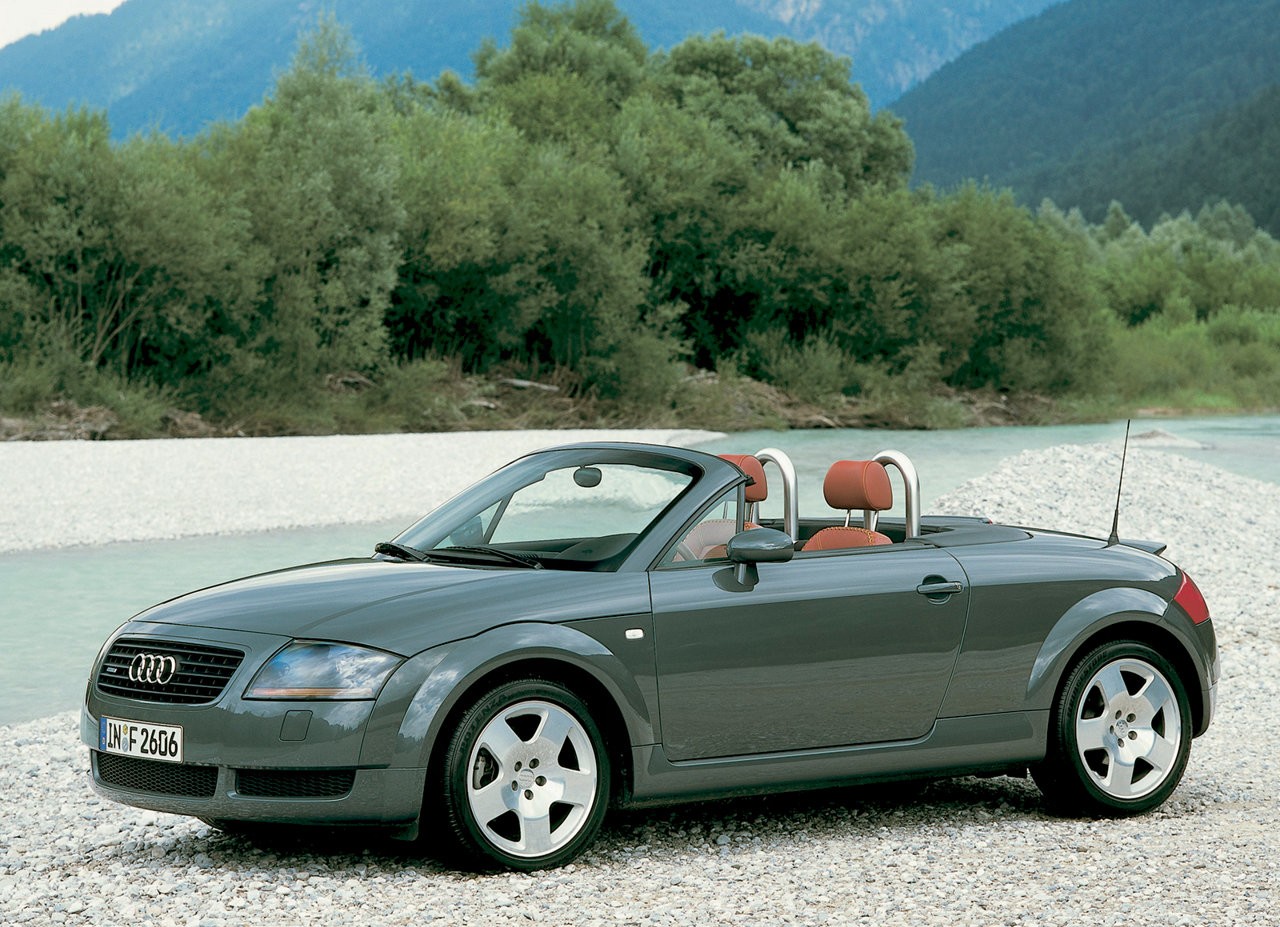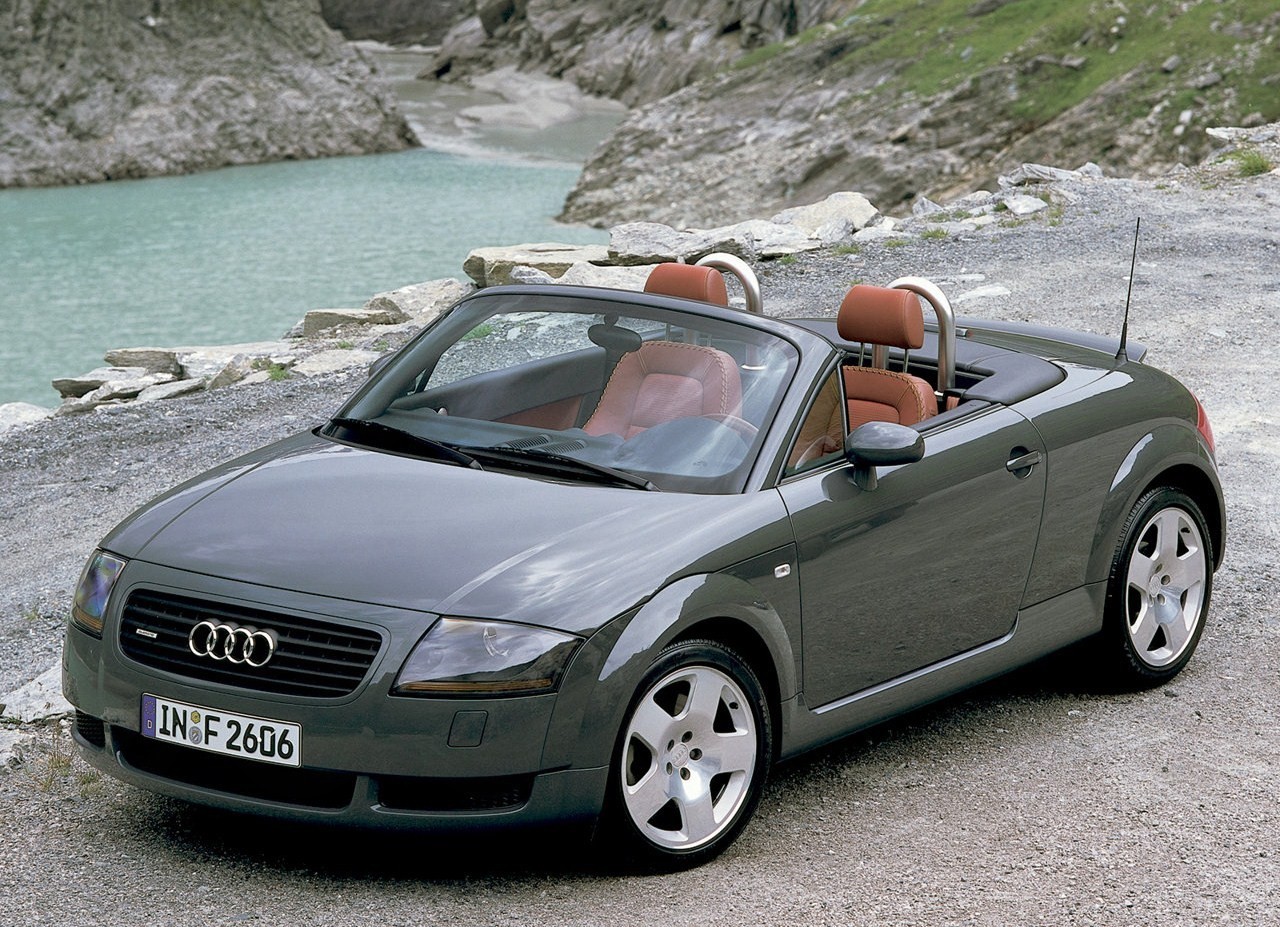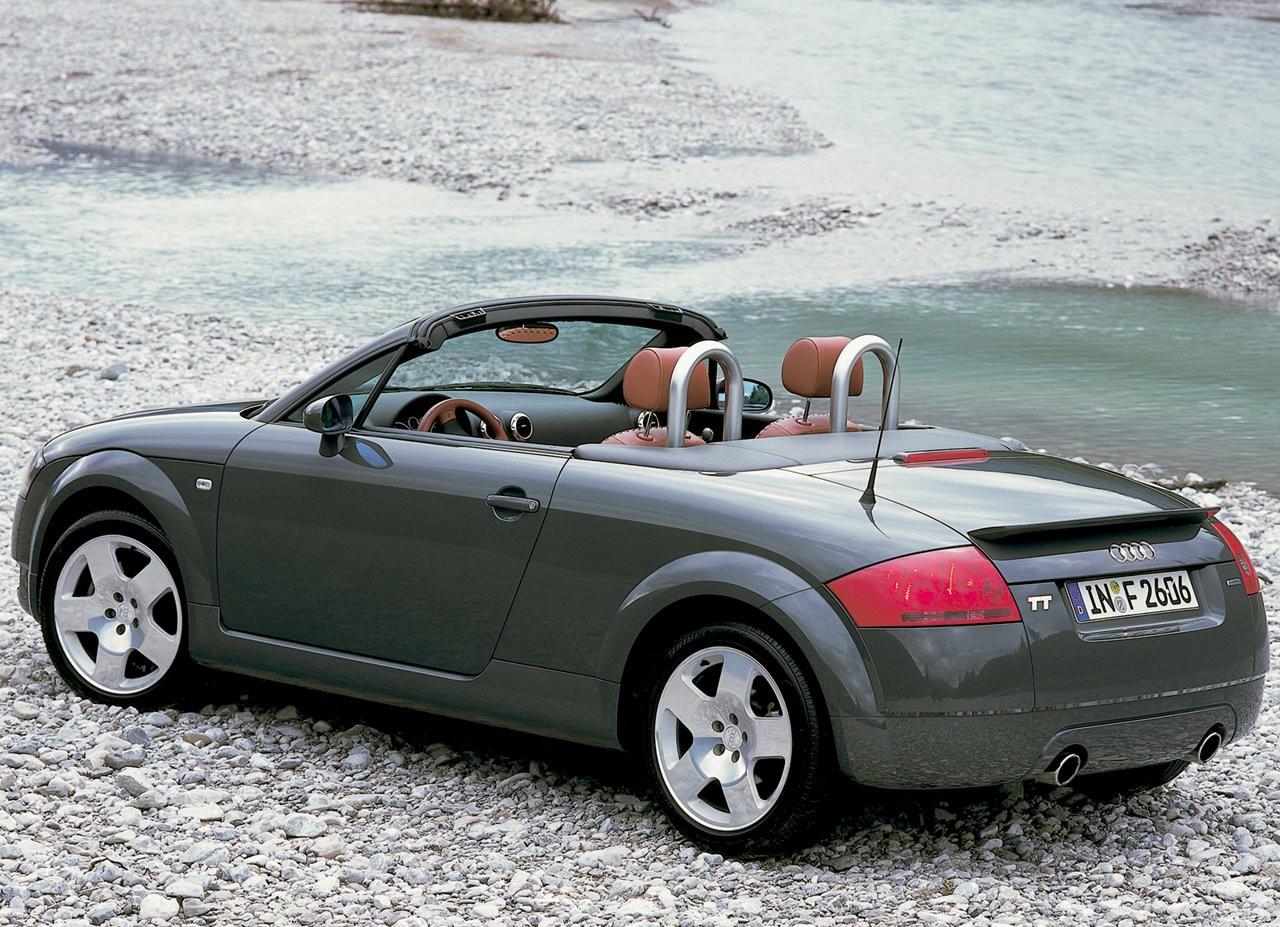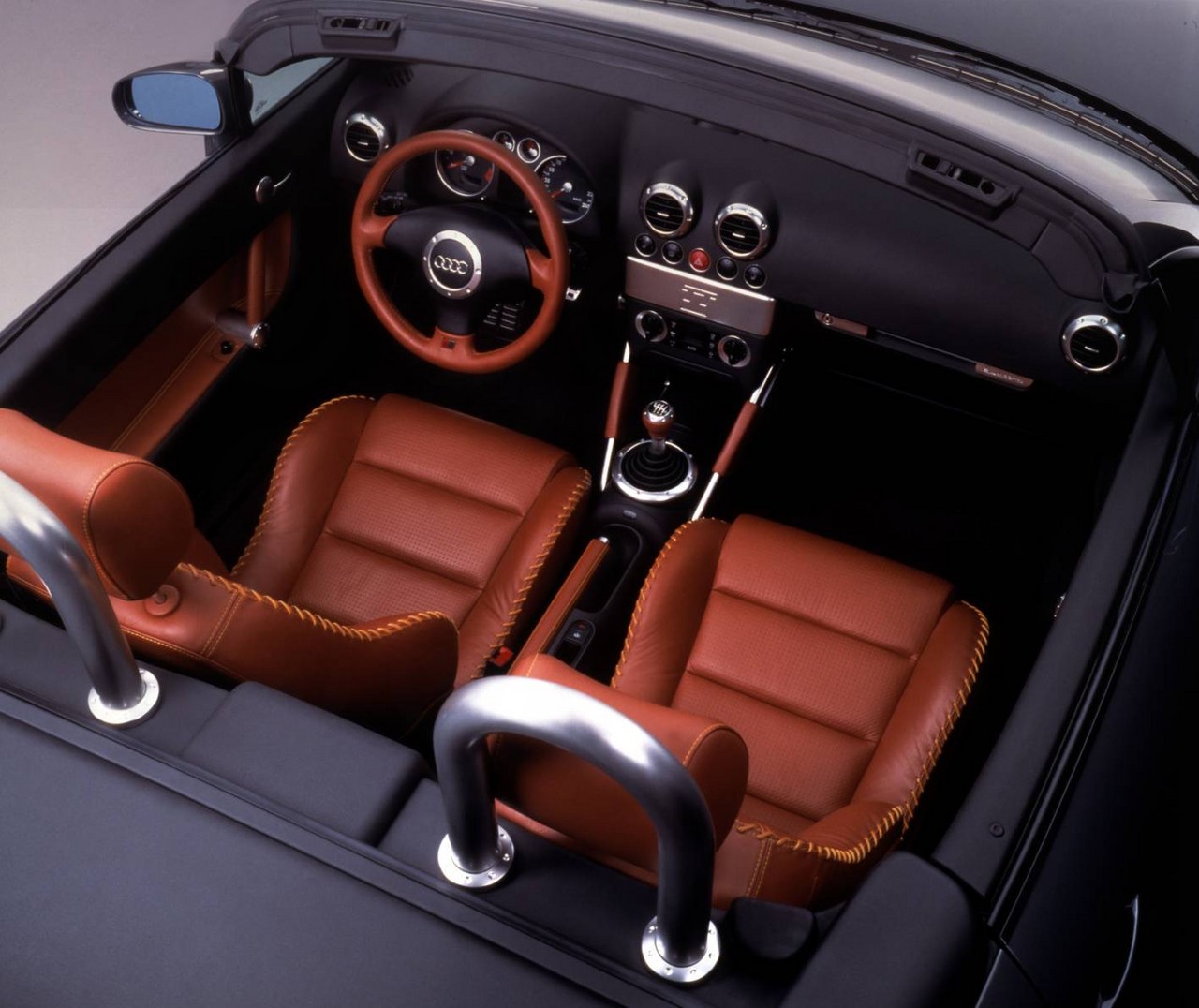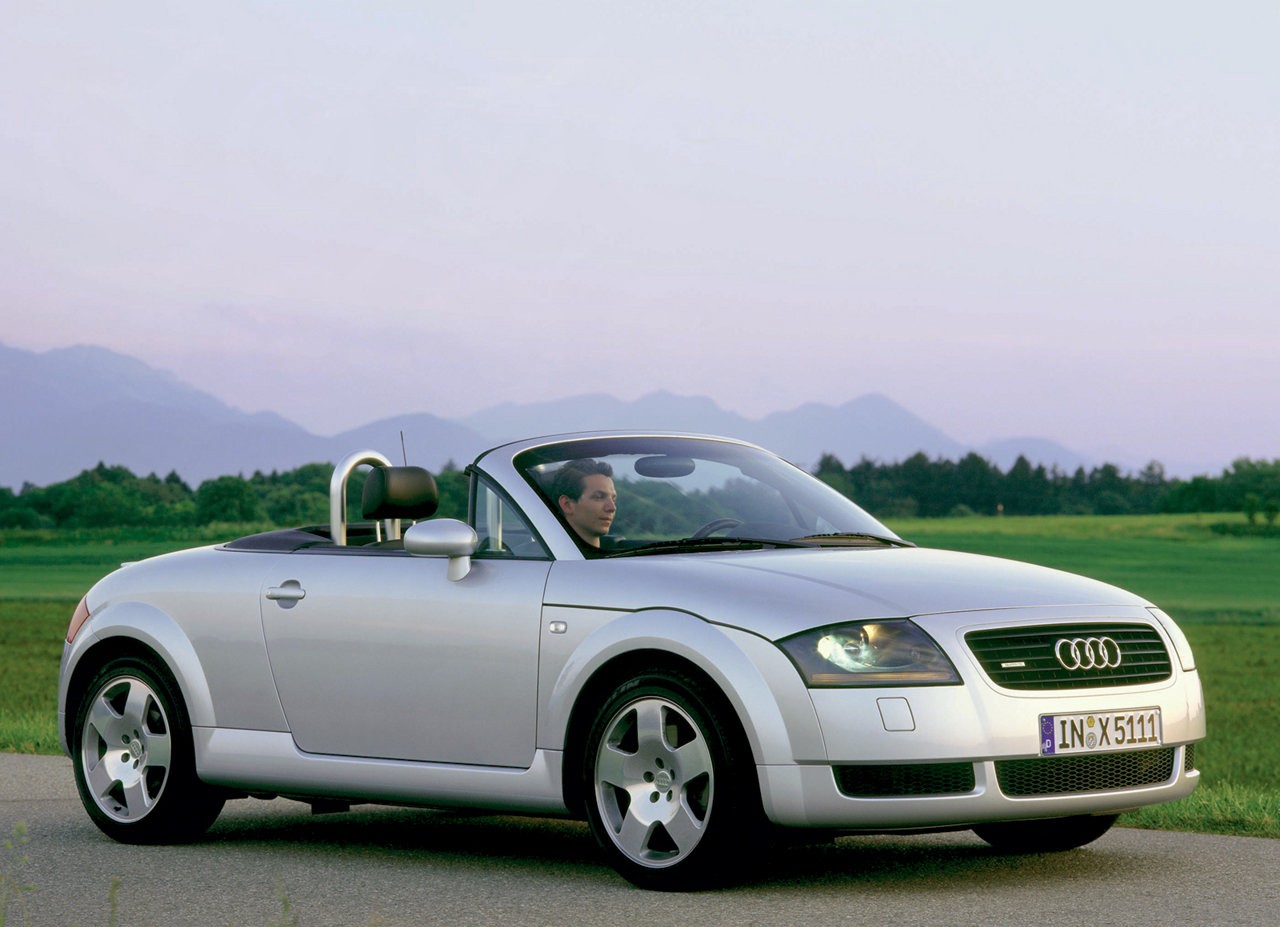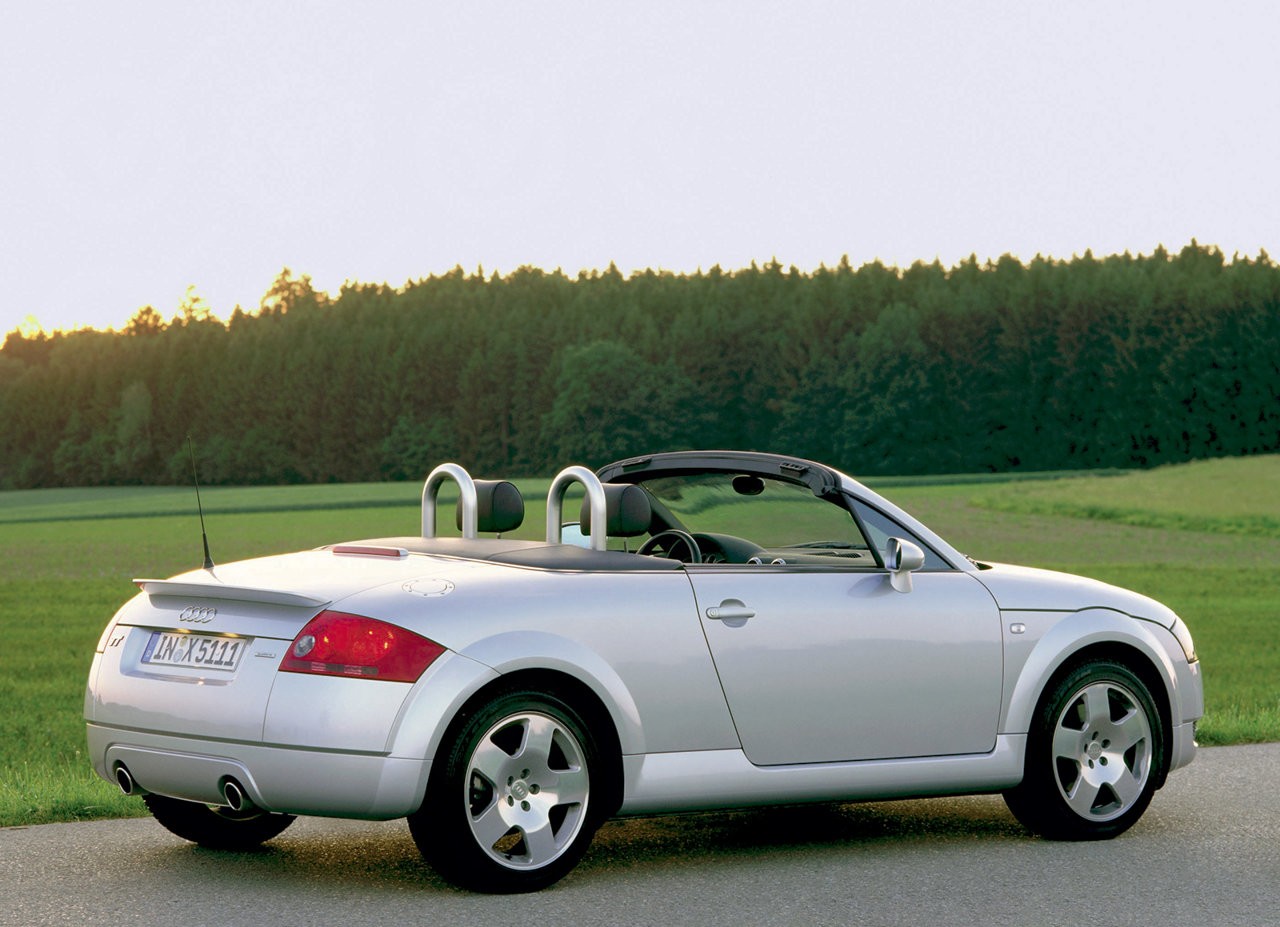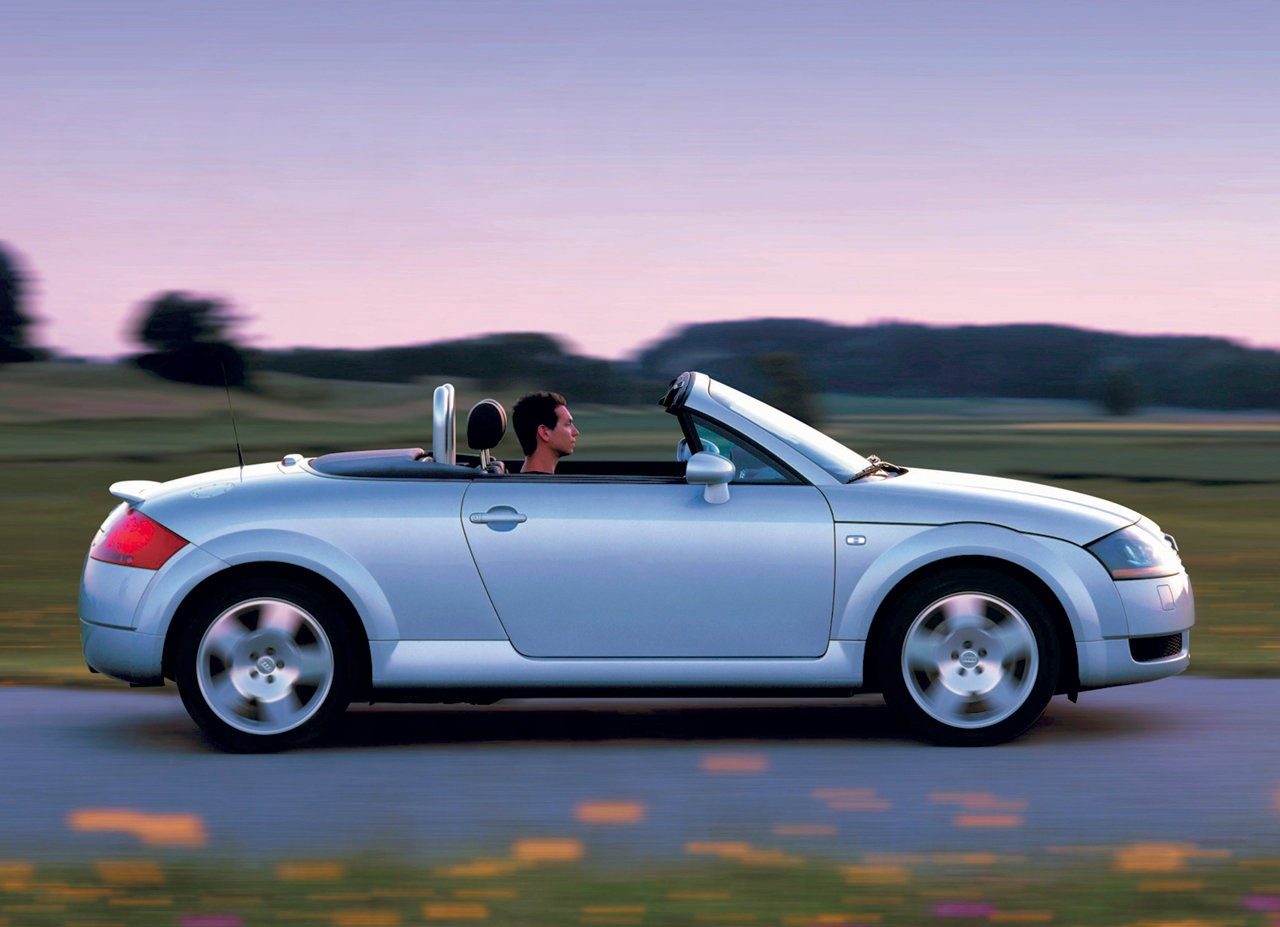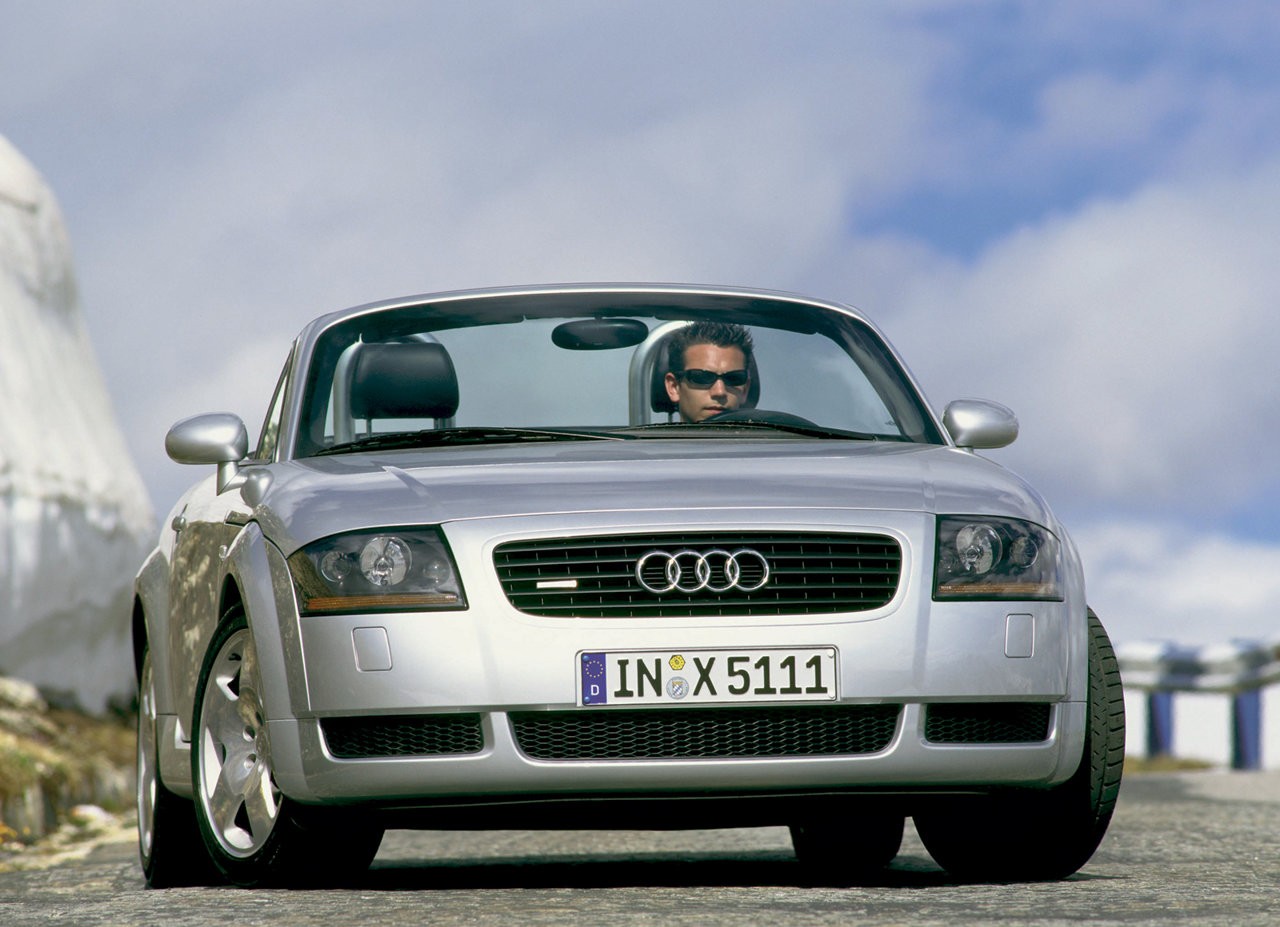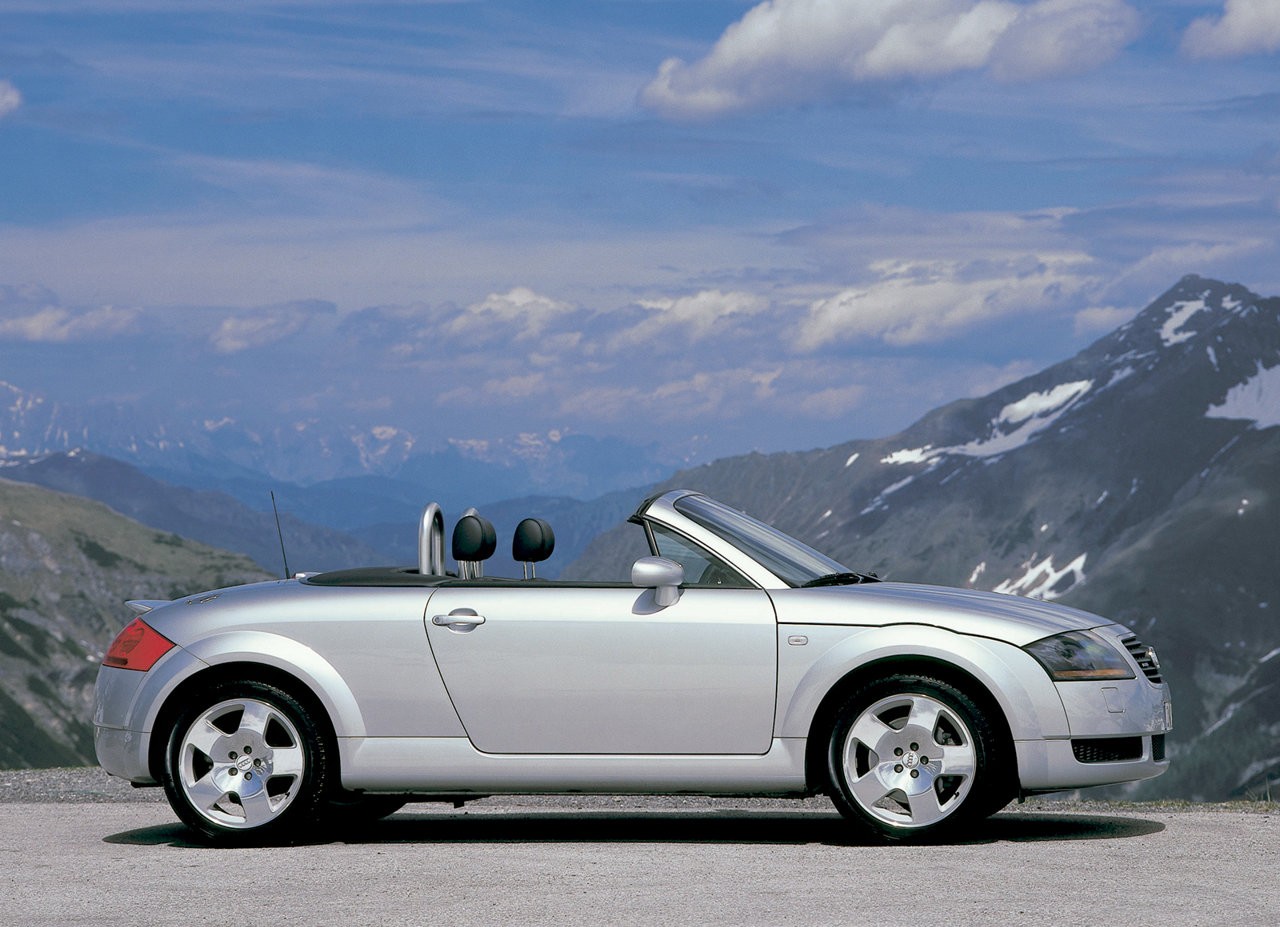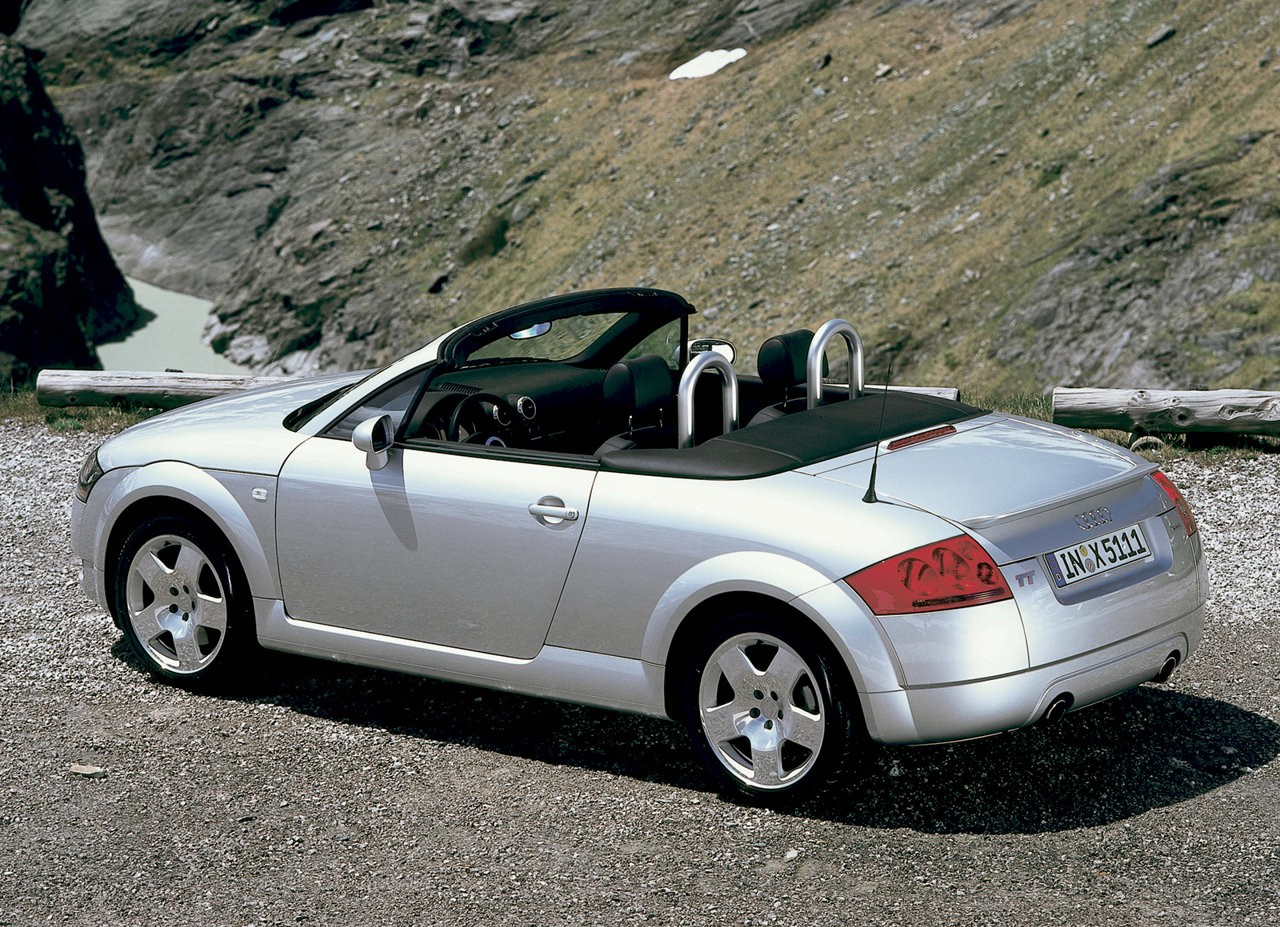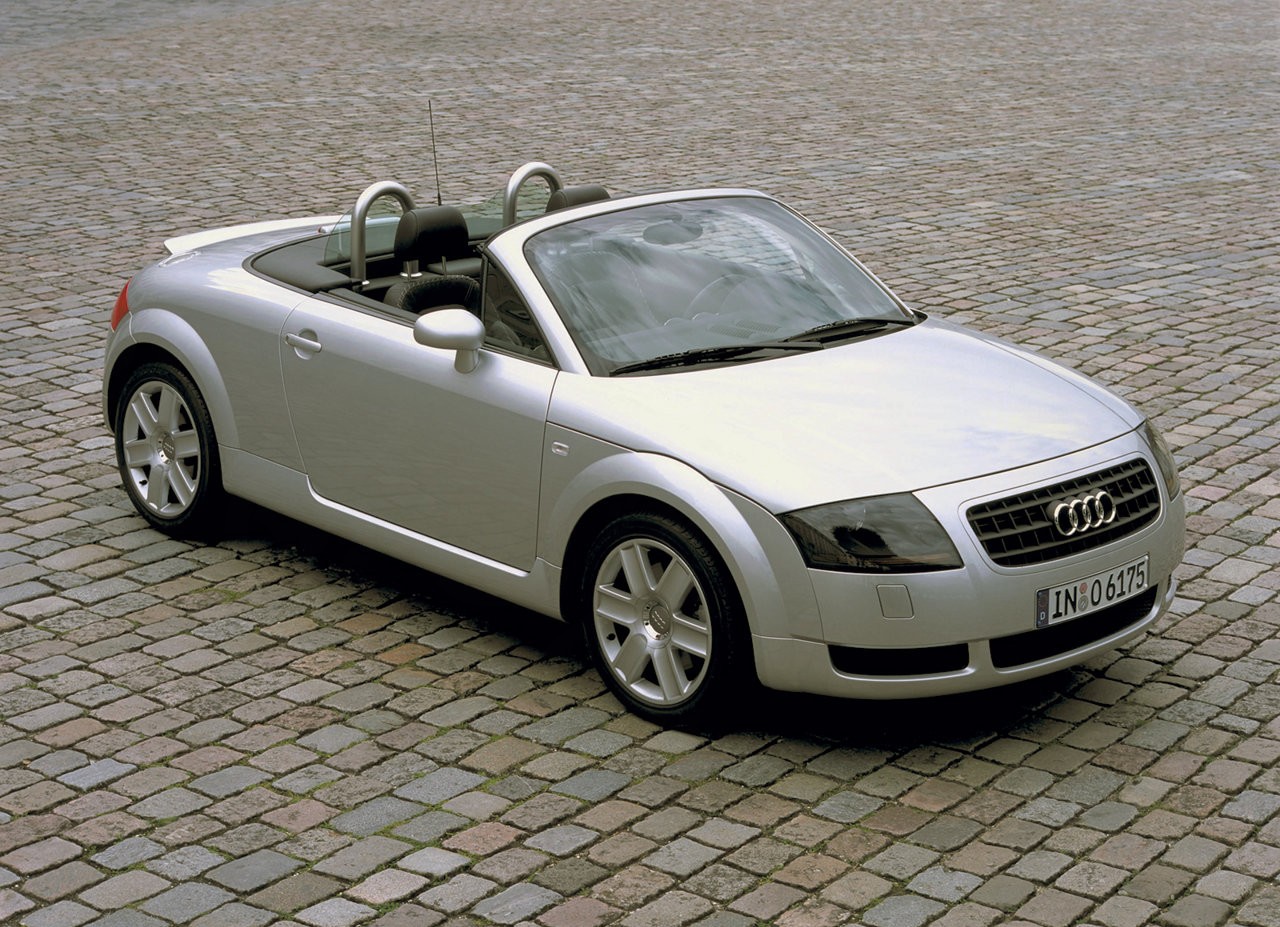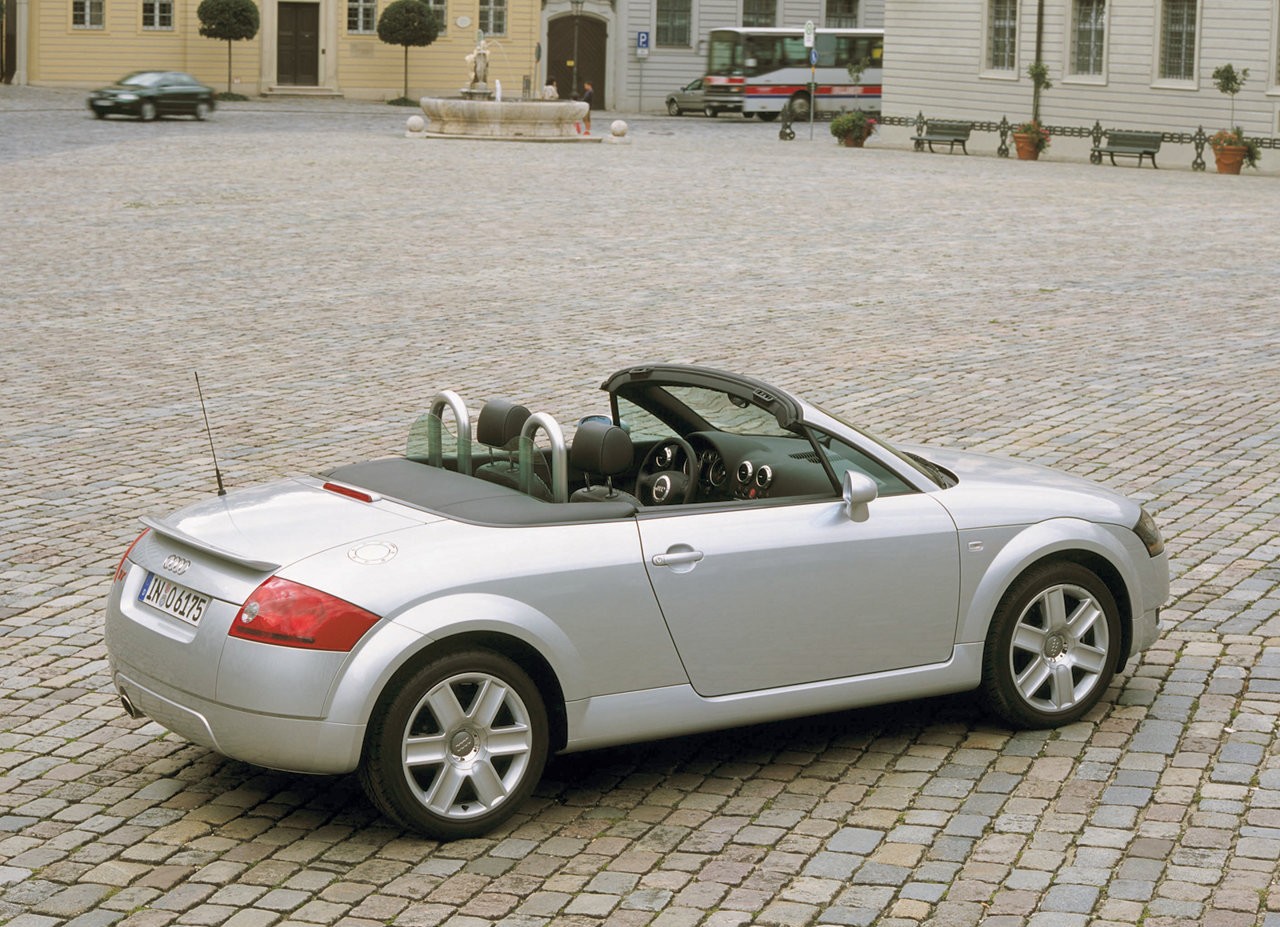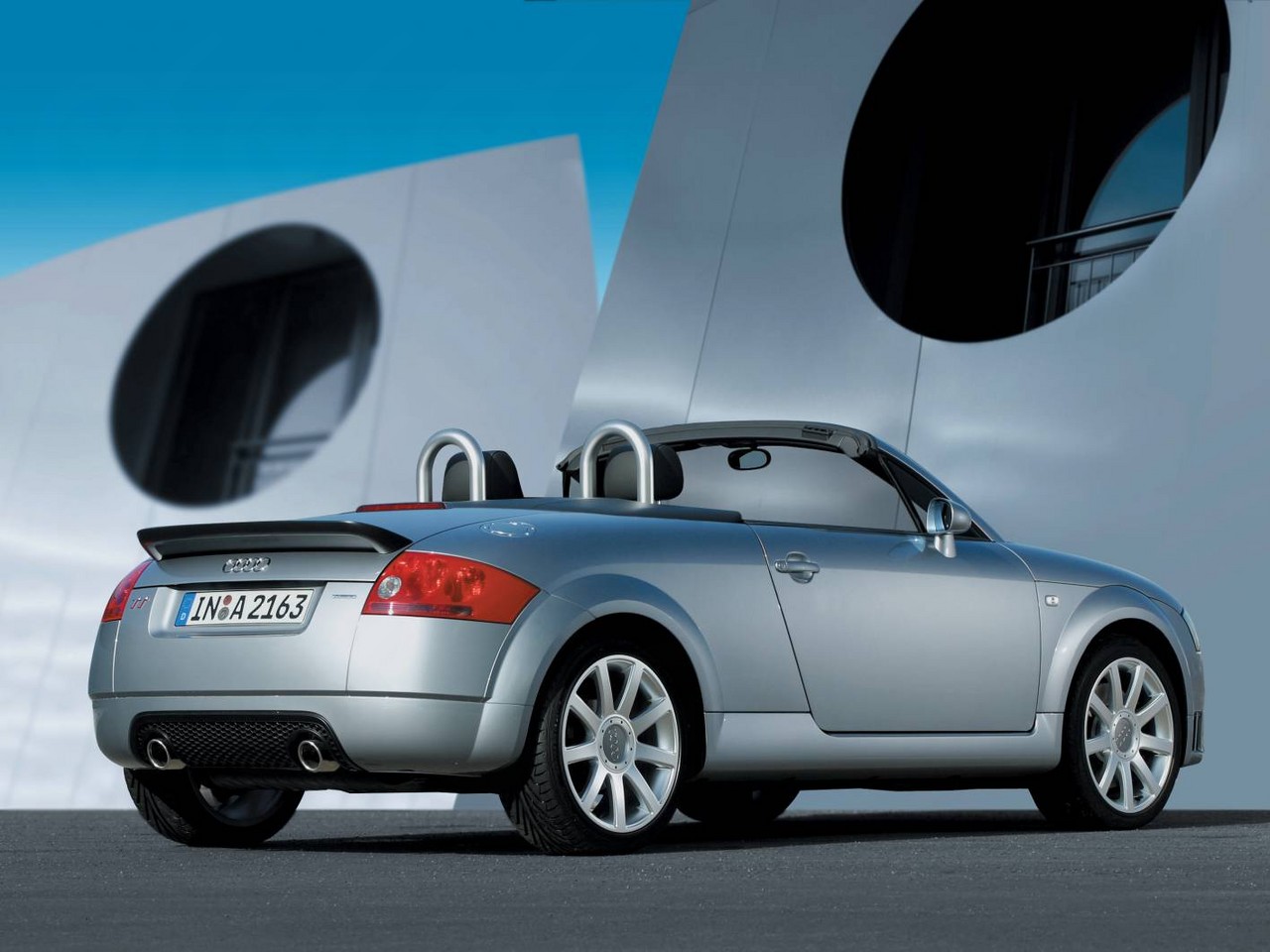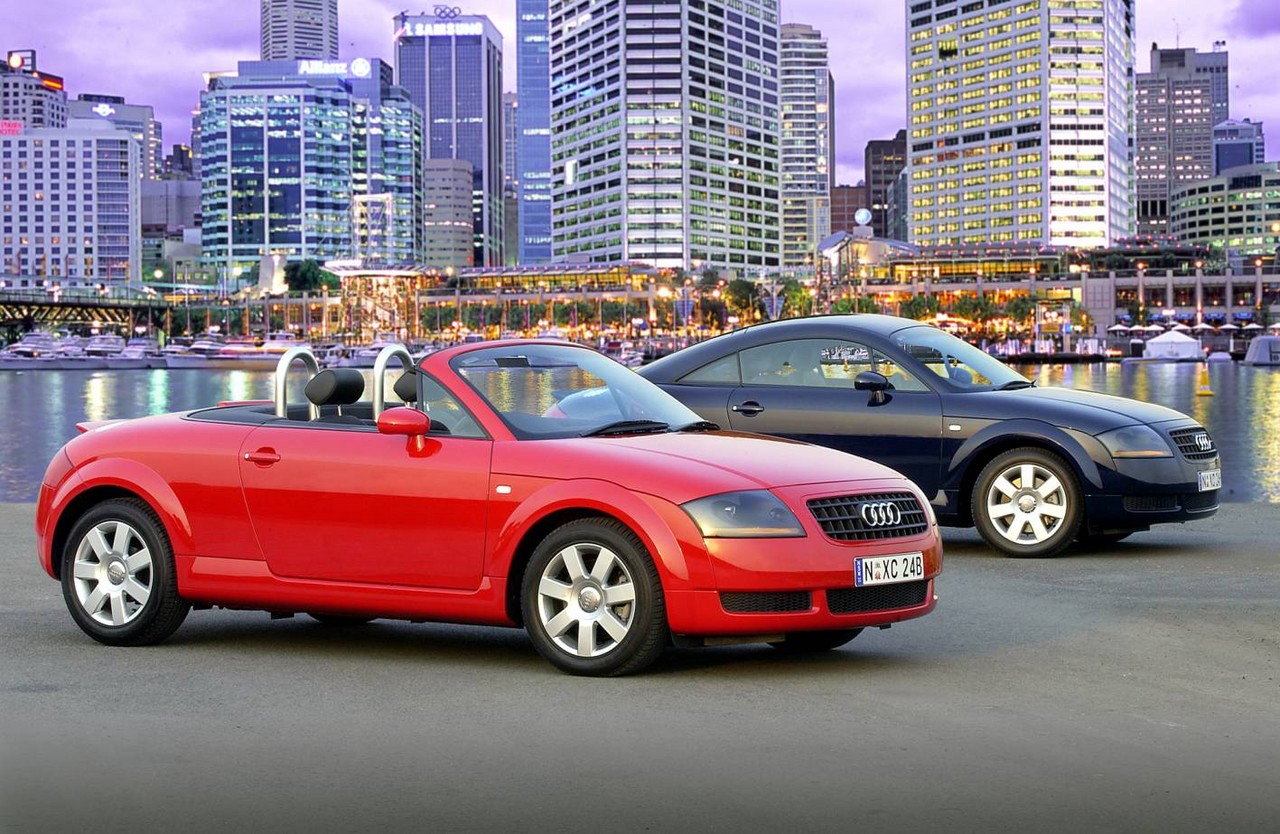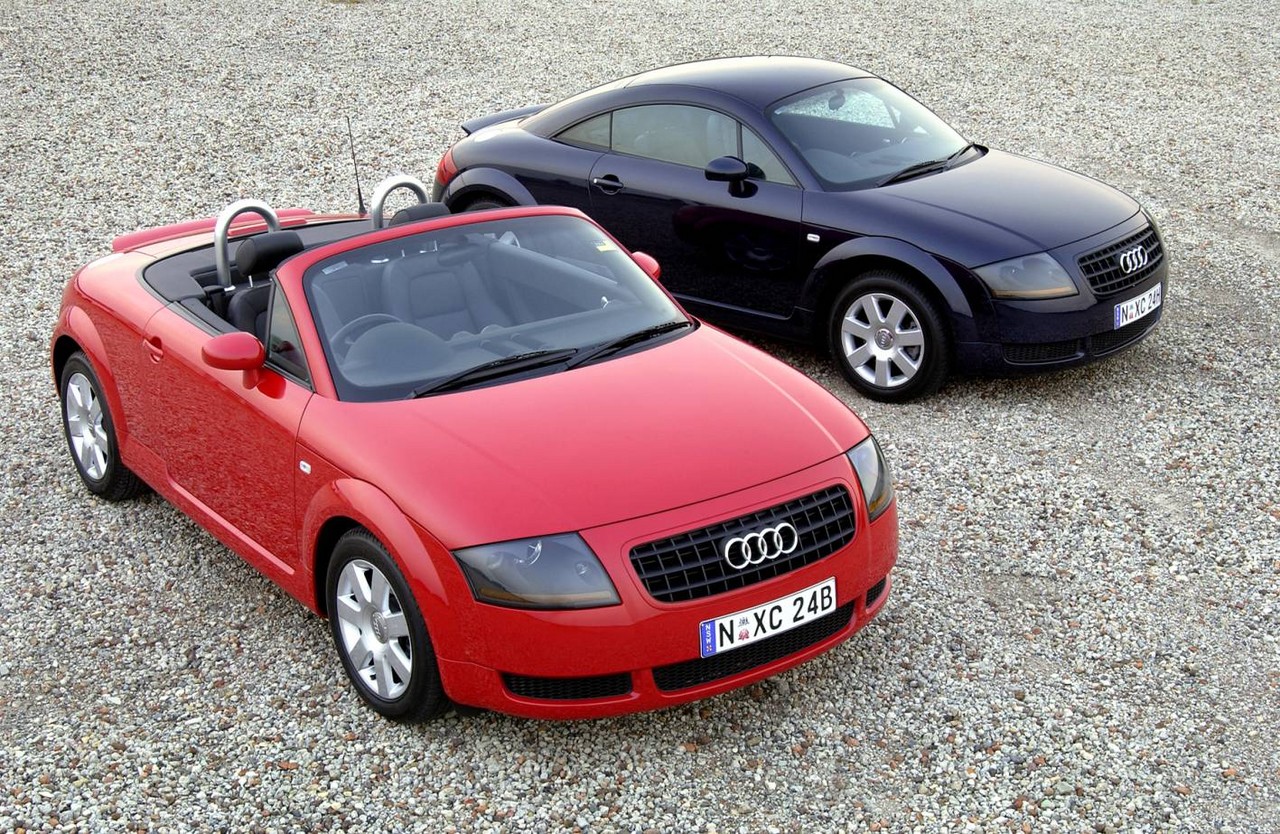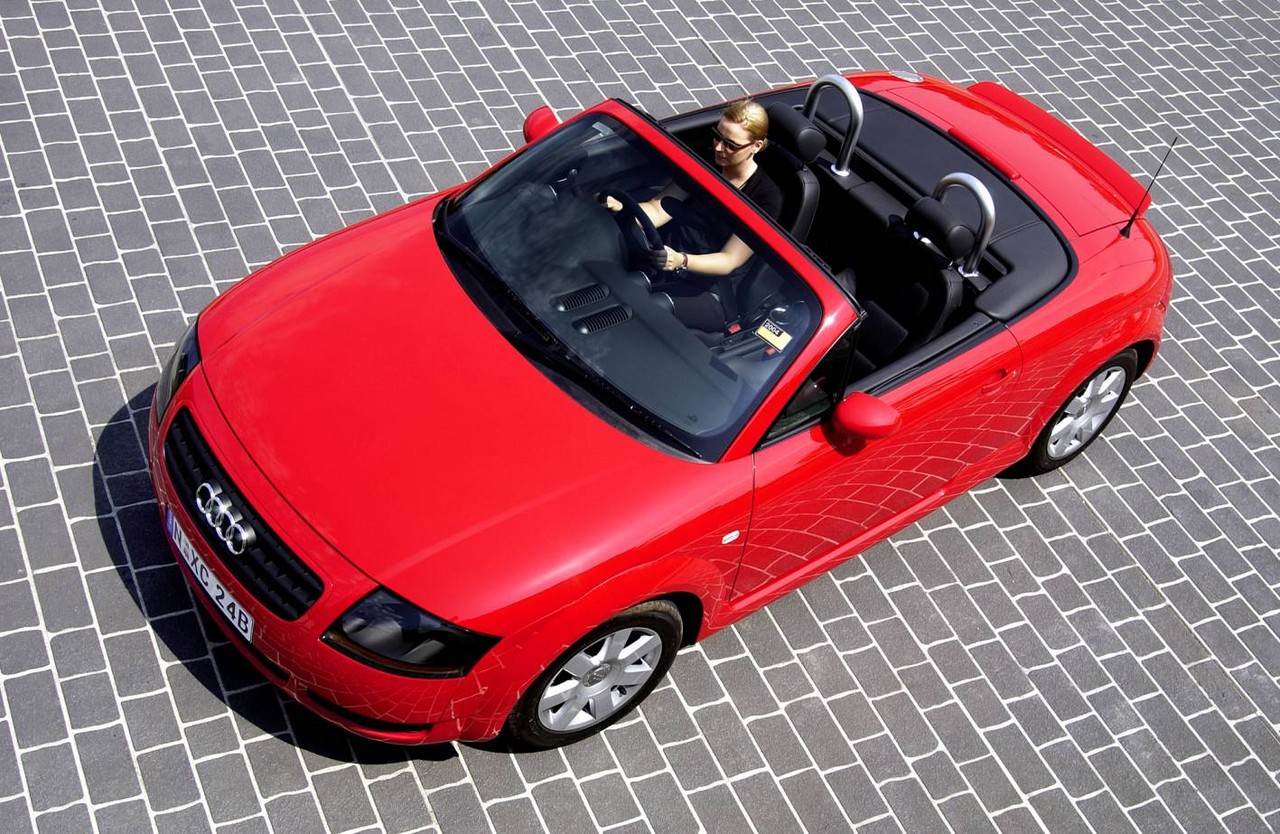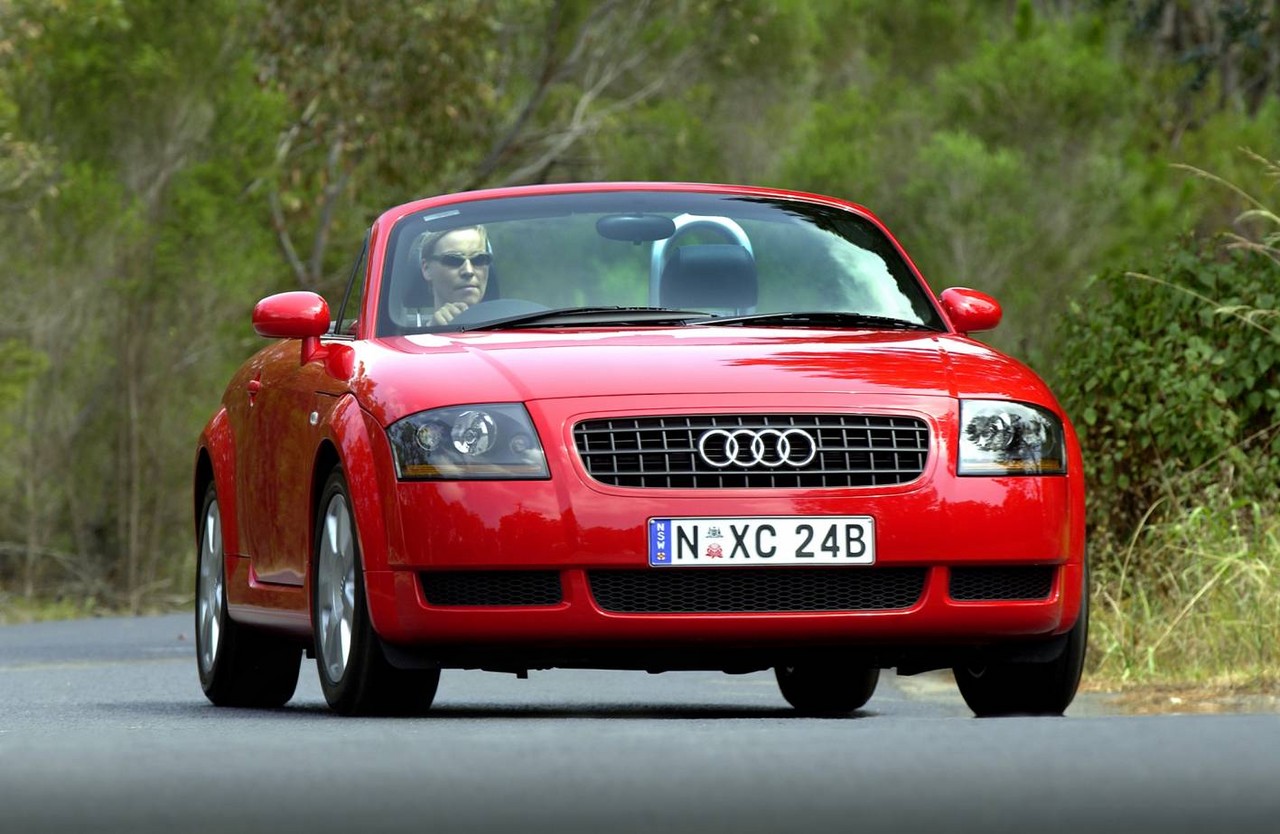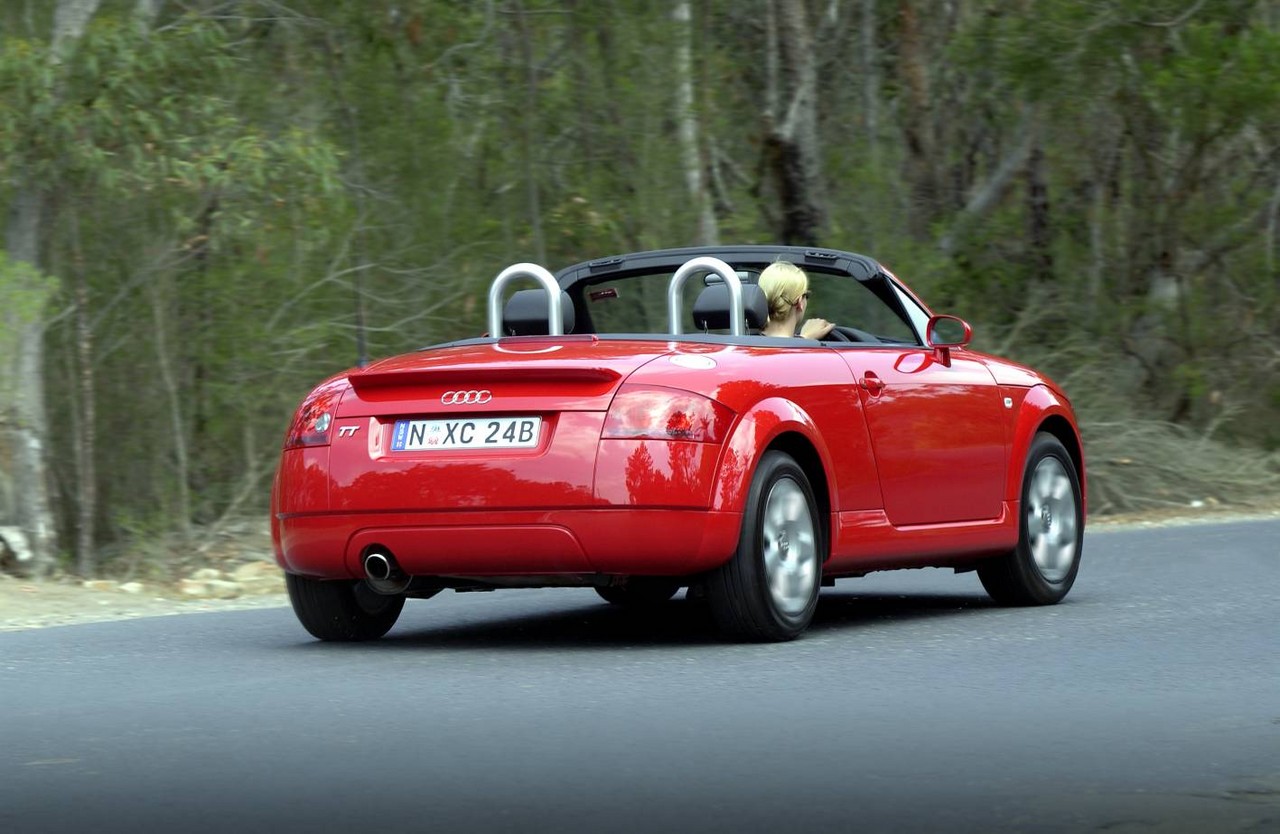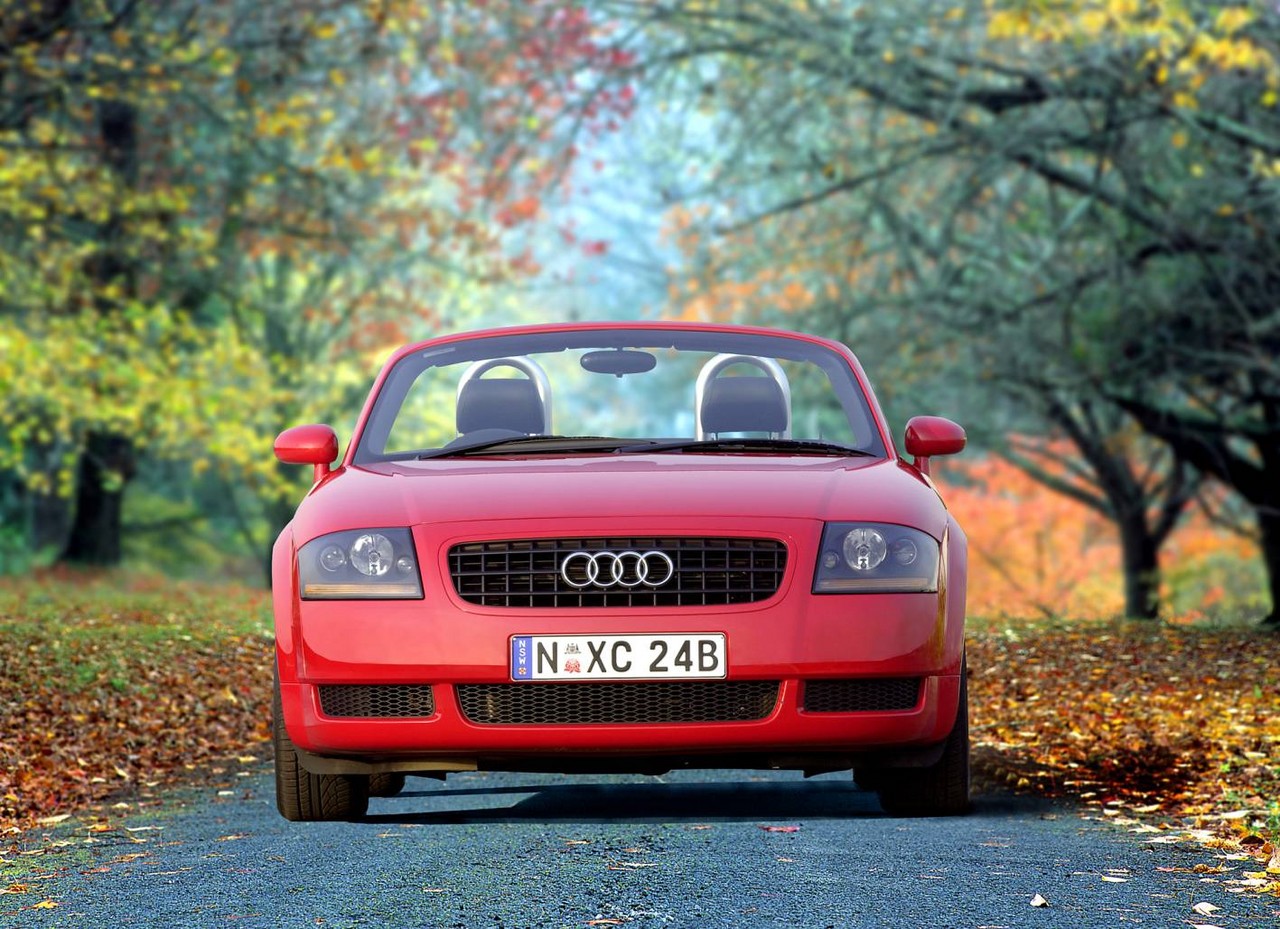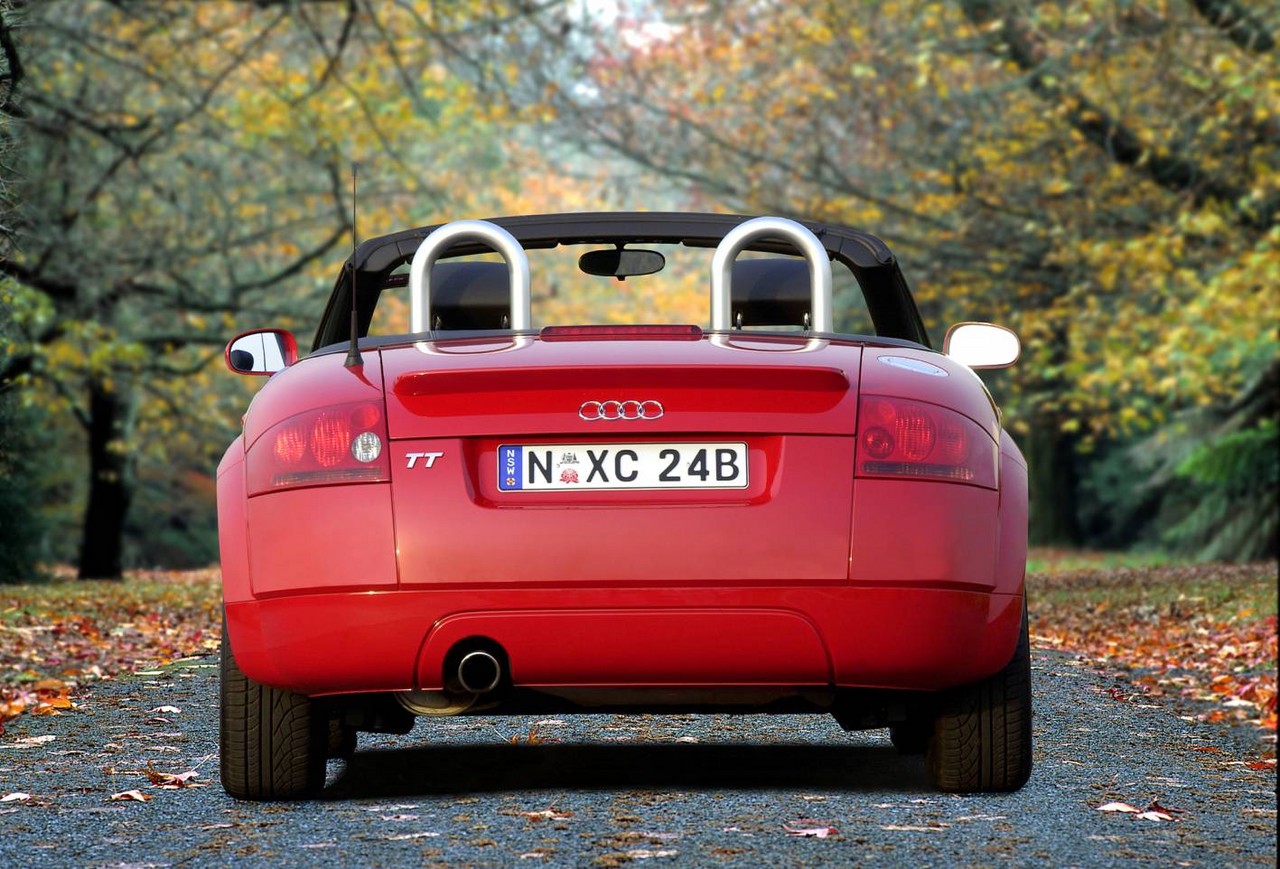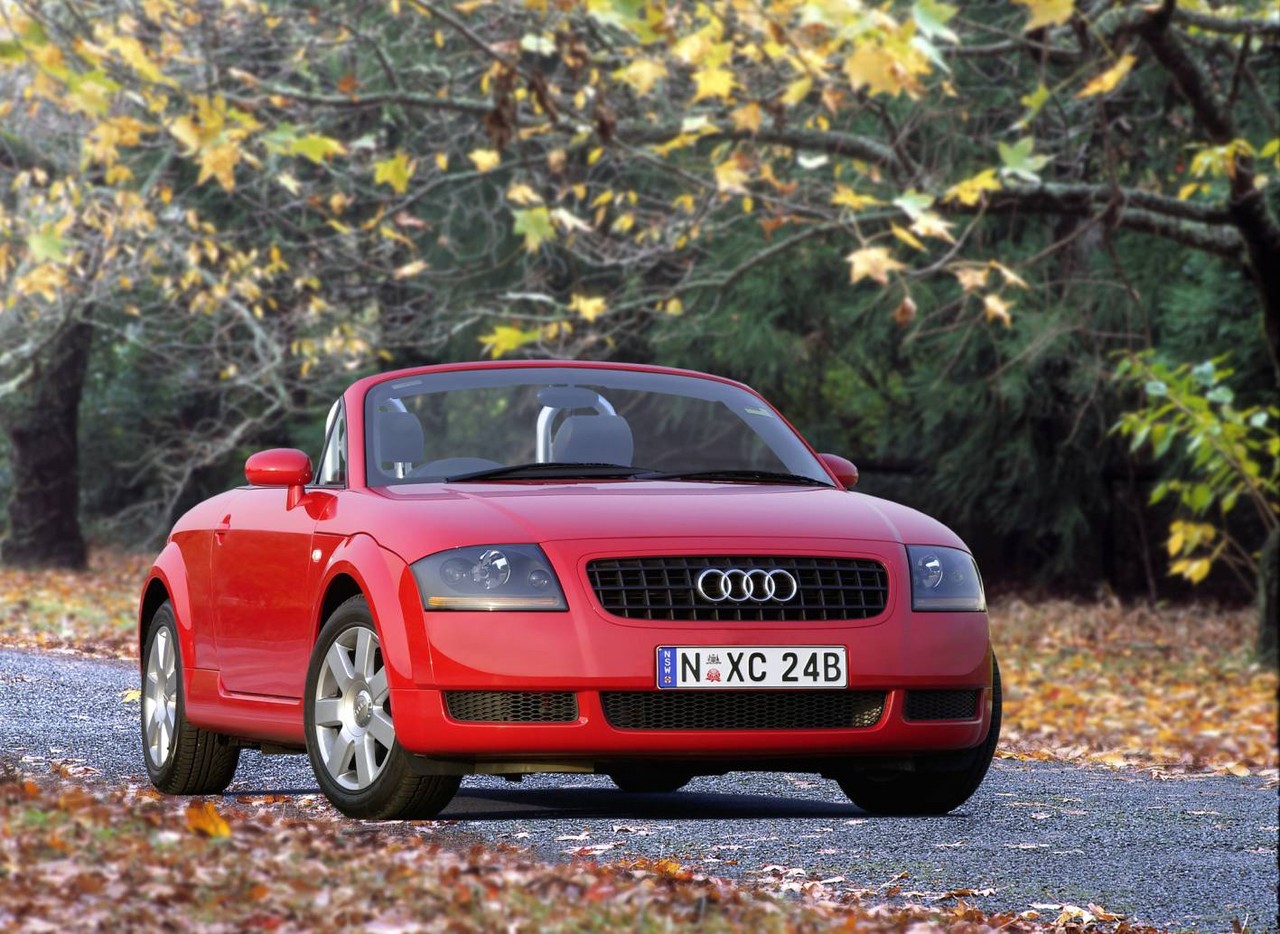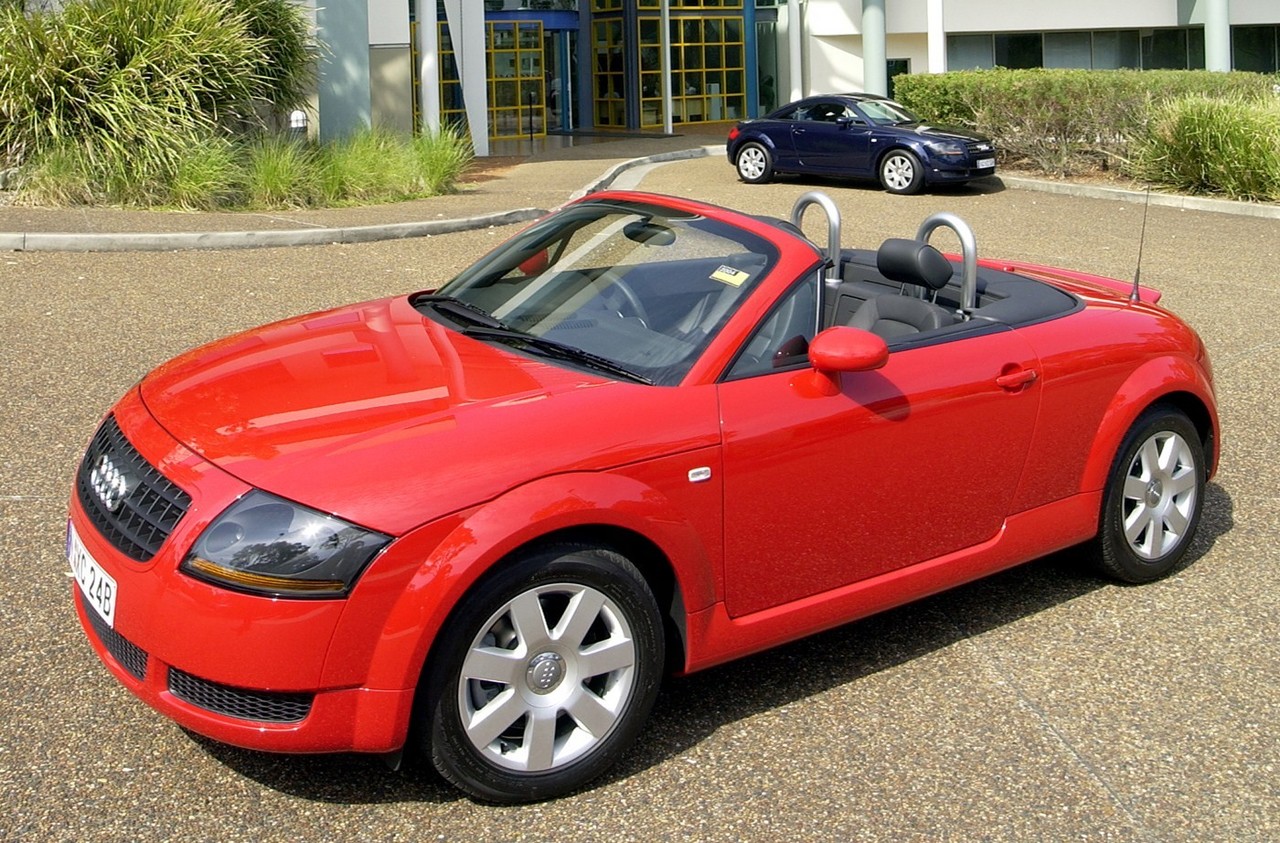
- Proficient ride/handling balance
- Body feels solid and rigid
- Direct, accurate steering
- Open-top appeal
- Firm ride on lower profile tyres
- Steering lacks feel
- Driving experience not as enjoyable as Mazda NB MX-5
Review: Audi 8N.I TT Roadster (2000-02)
Overview
Released in May 2000, the Audi 8N Series I (8N.I) TT Roadster was a two-seat, two-door soft-top convertible. Manufactured in Gyor, Hungary, the Audi 8N.I TT Roadster was powered by a 1.8-litre turbocharged four-cylinder petrol engine that was mated to a six-speed manual transmission.
Like its TT Coupe counterpart, the 8N TT Roadster was based on Volkswagen’s PQ34 platform which also underpinned the Volkswagen Mk.4 Golf . As such, the TT Roadster had MacPherson strut front suspension and, for quattro models, double transverse link rear suspension with trailing arms. The TT Roadster was 4041 mm long, 1764 mm wide, 1349 mm tall and had a 2429 mm long wheelbase.
| Engine | Drive | Trans. | Peak power | Peak torque |
|---|---|---|---|---|
| 1.8-litre BAM turbo petrol I4 | quattro | 6sp man. | 165 kW at 5900 rpm | 280 Nm at 2200-5500 rpm |
quattro and electronic differential lock
The TT Roadster’s quattro system utilised a first generation Haldex electro-hydraulic limited-slip coupler (LSC) which consisted of a wet multi-plate clutch, a hydraulic pump and an electronically-controlled throttle valve. In normal conditions, 90 per cent of the engine’s torque was directed to the front wheels. If traction was lost, however, up to 50 per cent of the engine’s torque could be directed to the rear wheels.
Models with the quattro system were also fitted with an electronic differential lock which could brake a spinning wheel to transfer torque to the opposing front wheel (i.e. cross axle torque transfer). As such, the inside front wheel could be braked when cornering to reduce understeer.
Safety equipment
Standard safety equipment for the Audi 8N TT Roadster included dual front airbags, front seat-mounted head/thorax airbags, ABS, electronic brake force distribution, electronic stability control, traction control and front seatbelts with pretensioners and load limiters.
Features
Standard features for the Audi 8N TT Roadster included 17-inch alloy wheels, a six speaker 225 watt Bose sound system with six-stack CD player, climate control air conditioning, combination leather/Alcantara seats, front fog lamps, a leather-wrapped steering wheel and gearshift, remote central locking, power windows and mirrors, tilt and telescopic steering wheel adjustment, alarm and immobiliser. From 2002, the TT Roadster featured xenon headlights with washers.
Review: Audi 8N.II TT Roadster (2003-06)
Overview
Released in February 2003, the Audi 8N Series II (8N.II) TT Roadster introduced front-wheel drive models and a new six-speed ‘Tiptronic’ (automatic) transmission with sequential shift mode. Unlike the quattro models, however, the front-wheel drive models had torsion beam rear suspension.
Visually, the Audi 8N.II TT Roadster could be identified by its new grille with three horizontal bars, alloy wheel designs and paint colours; inside, there was new trim. From 2003, the TT Roadster was offered in ‘S-Line’ editions.
| Engine | Edition | Years | Drive | Trans. | Peak power | Peak torque |
|---|---|---|---|---|---|---|
| 1.8-litre AUQ turbo petrol I4 | N/A, S-Line |
2003-05 | FWD | 6sp auto | 132 kW at 5500 rpm | 235 Nm at 1950-5000 rpm |
| 1.8-litre BAM turbo petrol I4 | N/A, S-Line |
2003-05 | Quattro | 6sp man. | 165 kW at 5900 rpm | 280 Nm at 2200-5500 rpm |
| 1.8-litre BVR turbo petrol I4 | N/A, S-Line |
2005-06 | FWD | 6sp auto | 140 kW at 5500 rpm | 240 Nm at 1950-5000 rpm |
Safety equipment and features
Compared to its 8N.I predecessor, standard safety equipment and features for the Audi 8N.II TT Roadster were substantially unchanged.
Euro NCAP crash testing
In Euro NCAP crash testing , an Audi 8N.II TT Roadster received a four star adult occupant protection rating with a score of 27.54 out of 37. Protection from serious leg injury was marginal for the driver in the offset crash test and there was a moderate risk of serious chest injury in the side impact test.
Related links
